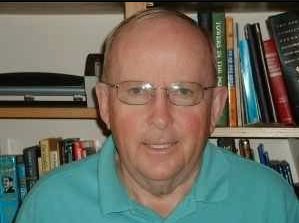 Have a happy, healthy new year 2020!
Have a happy, healthy new year 2020!
By Bob Bohlken
Yes, I know that New Year’s Eve has come and gone, but I hope to give you some insight into the New Year Eve’s celebration from my perspective.
Before the 1950s and the dawning of television and in some cases electricity in rural Nodaway County, the visual image of New Year’s Eve, other than the dropping of the lighted ball, was a rural metaphor. It was the picture of an old, white-bearded, tired-looking man with a scythe, which is a large hand tool resembling a sickle, used for cutting grass-like crops. This picture also included an emptied hour glass and a baby adorned with a banner across its body that reads the number of the upcoming year. Like in real life, where the cut crop contains noxious weeds, thistle and cocklebur, Father Time’s past year contained sins, unhealthy habits, disrespect of others, pessimism, lack of faith and hope that needed resolving.
Religiously, the coming of the new year was the Solemnity of Mary. It was the resolved recognition and honor of the baby Jesus by the Magi, wise men from the non-Jewish western nations. The resolutions or fixed purposes are self-made commitments to ones-self, but are believed to be stronger when shared with another. The most common resolutions deal with promises to lose weight or to be involved in physical exercise. Supposedly, folks were making new year resolutions dating back 4,000 years in Babylon.
I personally rely on the International Optimist Club Creed for my resolve. I have been a member of the Optimist Club of Maryville for 50 years and frequently apply sections of the creed as my mantra; if nothing else to be a reminder of my resolve. I promise myself “To be so strong that nothing can disturb my peace of mind. To talk health, happiness and prosperity to every person I meet. To make all my friends feel that there is something in them. To look at the sunny side of everything and make my optimism come true. To think only of the best, to work only for the best and expect only the best. To be just as enthusiastic about the success of others as I am about my own. To forget the mistakes of the past and press on to the greater achievements of the future. To wear a cheerful countenance at all times and give every living creature I meet a smile. To give so much time to the improvement of myself that I have no time to criticize others. To be too large for worry, too noble for anger, too strong for fear and too happy to permit the presence of trouble.”
Undoubtedly, music has long been associated with New Year’s celebration; at least in 1788 when a poem by Robert Burns, a Scottish writer, was sung on the occasion of the new year. To my knowledge, “Auld Lang Syne” was first performed on United States broadcast radio by Guy Lombardo and his Royal Canadians in 1929 at the ballroom of the Roosevelt Hotel in New York City. The Scottish words are in the form of a rhetorical question, that is having a predictable answer, as a toast: “Should old acquaintance be forgot, And never brought to mind? Should old acquaintance be forgot, And days of auld lang syne?” that is long ago. The refrain, “For auld lang syne, my dear, For auld lang syne; We’ll take a cup of kindness yet For auld lang syne. And here’s a hand, my trusty friend, And give’s a hand of o’thine; We’ll take a cup of kindness yet, For auld lang syne.” Robert Burns’ musical toast still is sung as the final minutes of the past year tick out and the new year begins.
Neither Mary, my spouse, or I recall our parents partying and dancing the New Year in with friends, but we both were born late in our parents’ lives. We have cut a rug and tipped a toast or two. Here in Maryville we experienced the new year at the American Legion Hall, the Country Club, the Elks Club and one time at the Frog Hop in St. Joe. We drank champagne, wore paper hats, blew paper horns, rattled the noise makers and danced with the best of them. Although one of my friends told me that what I did wasn’t dancing; I guess I jived too much to the music.
When I visit with rural folks my age and older, most say that in their middle age and older, they didn’t celebrate New Year’s Eve. Some say they played cards with friends and neighbors. It was in a home and a family gathering. The card games were “Rook,” “Pinochle” and “Pitch.” Several said that they were glad when midnight came so that they could have dessert, go home and go to bed.
Some said in their younger days, they went to a movie. Supposedly, the Missouri Theater had a stage on which a small college band played a short concert before the 25¢ movie. The late Eddie Niewald, who was a member of the Maryville Civilian Conservation Corps, attended 1935s New Year’s Eve’s movie. When they came out of the theater, they had to crawl back to camp because of the ice and snow. It was a record snowfall and the trains could get to Maryville with the troop’s food rations for two weeks.
There you have it, New Year’s Eve means different things to different people. It has religious meaning, a social occasion for dancing and imbibing, social visiting, playing card games, going to the movies, watching on TV the ball drop vicariously with thousands of folks in New York City and making resolutions for behavior change in the new year. One other means of welcoming the new year is with fireworks or firing off guns into the air. Thank God, we don’t have that in Nodaway County; at least I don’t think we do.




Facebook Comments